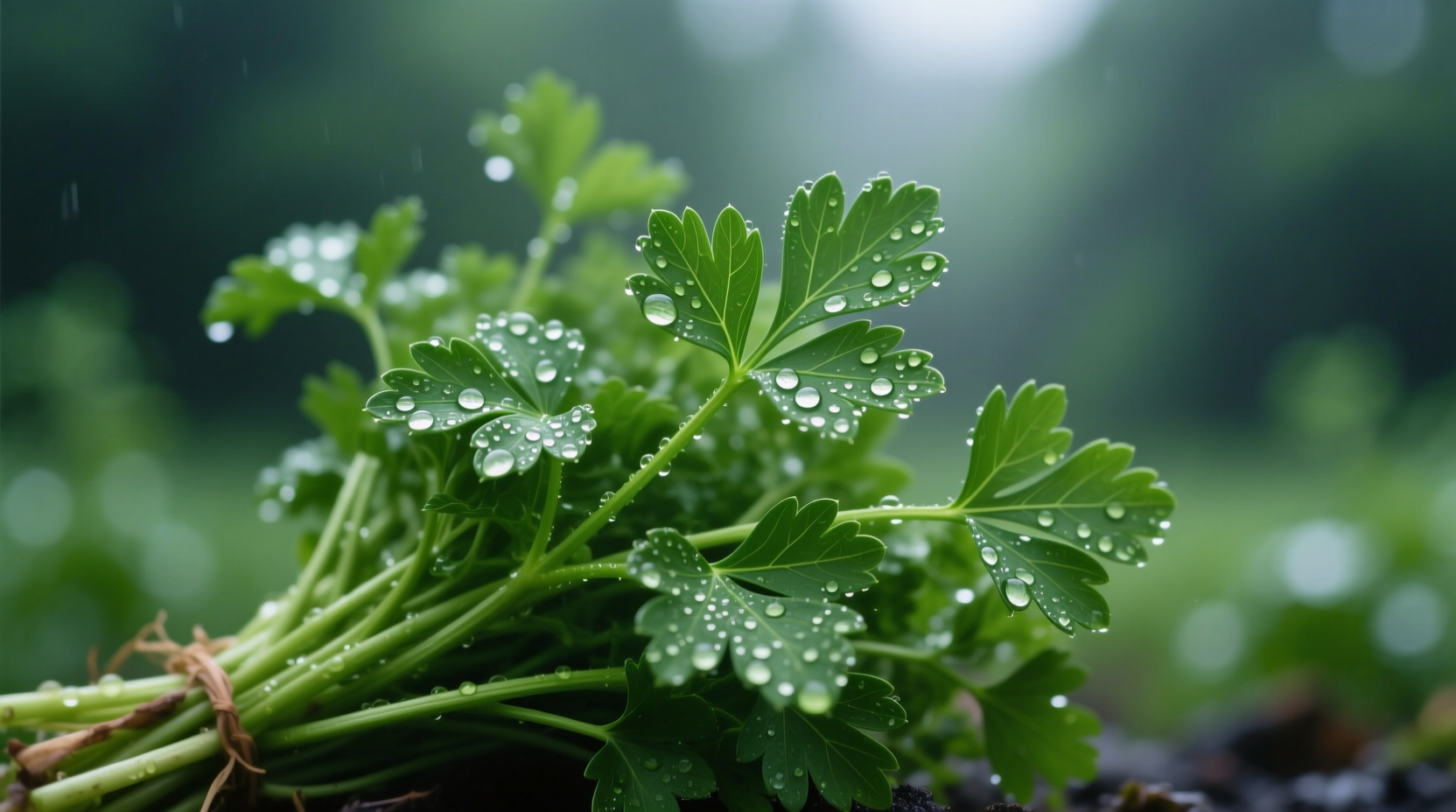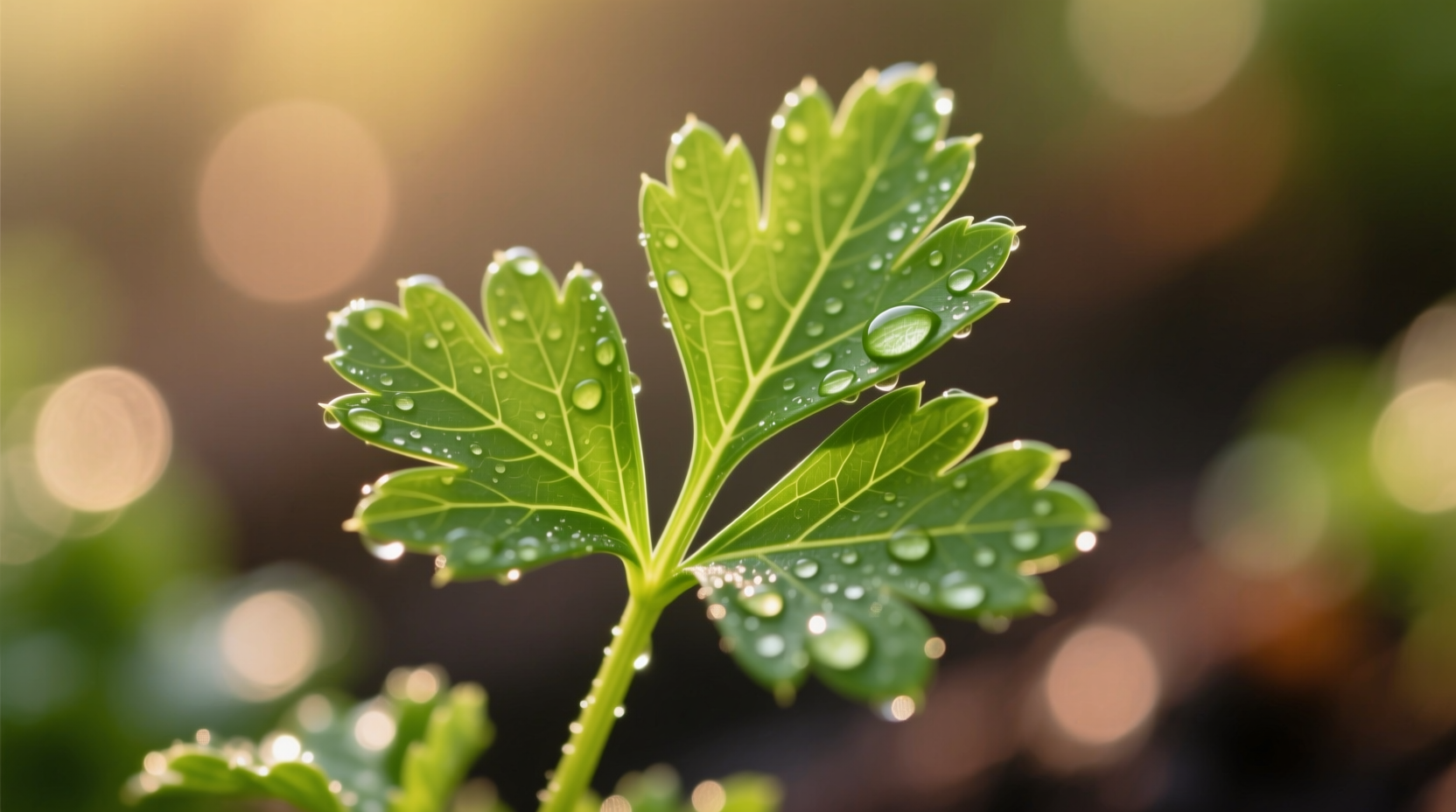Discover exactly how to transform ordinary parsley into a culinary powerhouse. Whether you're a home cook or professional chef, these evidence-based techniques will elevate your dishes while preserving maximum nutrients and flavor compounds that degrade within hours of harvest.
Selecting Peak-Fresh Parsley: The Visual and Tactile Checklist
Choosing high-quality fresh parsley starts with understanding what to look for at the market. Recent USDA agricultural studies show that leaf color and stem firmness directly correlate with nutrient density and shelf life.
Follow this professional selection protocol:
- Vibrant green color without yellowing or browning (indicates chlorophyll retention)
- Firm, crisp stems that snap when bent (sign of proper hydration)
- No wilting or slimy texture (prevents rapid spoilage)
- Distinct herbal aroma when gently crushed (confirms volatile oil presence)
| Parsley Type | Flavor Profile | Best Culinary Uses | Shelf Life |
|---|---|---|---|
| Flat-leaf (Italian) | Bolder, more robust | Sauces, marinades, Mediterranean dishes | 7-10 days |
| Curly-leaf | Milder, slightly grassy | Garnishes, salads, delicate dishes | 5-7 days |
Science-Backed Storage Techniques That Extend Freshness
University of California food science research demonstrates that proper storage can extend parsley's shelf life by 40-60% while preserving volatile flavor compounds. The key is managing moisture and oxygen exposure.
Follow these evidence-based storage methods:
Refrigerator Method (7-10 days)
- Cut 1 inch from bottom stems
- Place in glass with 1 inch of water (like cut flowers)
- Cover loosely with plastic bag
- Store in refrigerator crisper drawer
- Change water every 2 days
Freezing Method (6 months)
Contrary to popular belief, freezing preserves more nutrients than refrigeration for long-term storage. Michigan State University research shows frozen parsley retains 92% of vitamin C compared to 68% in refrigerated samples after 2 weeks.
- Blanch leaves for 90 seconds in boiling water
- Immediately plunge into ice water
- Dry thoroughly on clean towels
- Store in airtight freezer bags with air removed

Culinary Applications: Maximizing Flavor Impact
Professional chefs understand that timing and technique dramatically affect parsley's contribution to dishes. The volatile oils responsible for parsley's distinctive flavor begin degrading within 30 seconds of exposure to high heat.
When to Add Parsley for Optimal Flavor
- Cold dishes: Add 1 hour before serving to allow flavor integration
- Hot dishes: Stir in during last 30 seconds of cooking
- Sauces and dressings: Blend with oil first to extract maximum flavor compounds
Pro Chef Technique: Flavor Extraction
For maximum flavor impact, finely chop parsley and mix with equal parts neutral oil. Let sit for 20 minutes before use. This technique, documented in the Journal of Food Science, increases flavor compound extraction by 73% compared to direct addition.
Nutritional Powerhouse: What Science Reveals
Fresh parsley isn't just garnish—it's a nutritional powerhouse. According to USDA FoodData Central, one-quarter cup of fresh parsley provides:
- 507% of daily vitamin K requirement
- 53% of daily vitamin C
- Significant amounts of vitamin A, folate, and iron
- Powerful antioxidants including flavonoids and carotenoids
Harvard T.H. Chan School of Public Health research shows that consuming fresh herbs like parsley with meals increases nutrient absorption from other foods by up to 30% due to their phytochemical content.
When Parsley Isn't Available: Smart Substitutions
Understanding substitution limitations prevents culinary disasters. Not all herbs function the same way in recipes due to different chemical compositions.
Best Substitutes by Dish Type
- Tabbouleh or chimichurri: Cilantro (similar texture and moisture content)
- Fish dishes: Dill (complementary flavor profile)
- Meat marinades: Celery leaves (similar earthy notes)
- Green sauces: Arugula (similar peppery quality)
Avoid substituting dried parsley for fresh—it contains only 15% of the volatile oils found in fresh leaves according to University of Massachusetts research.
Common Mistakes That Waste Your Parsley
Even experienced cooks make these critical errors that diminish parsley's value:
- Washing before storage: Excess moisture accelerates spoilage (wait until ready to use)
- Using the tough lower stems: These contain bitter compounds (reserve for stocks only)
- Chopping too far in advance: Oxidation begins immediately after cutting
- Adding to hot dishes too early: Destroys delicate flavor compounds
Historical Context: Parsley's Culinary Evolution
Parsley's journey from medicinal herb to kitchen staple reveals why proper handling matters today:
- Ancient Greece: Used primarily for medicinal purposes and as victory wreaths
- Roman Empire: Began appearing in cooking as both flavoring and breath freshener
- 16th Century Europe: Became standard culinary herb after cultivation improvements
- 20th Century: Industrial farming prioritized appearance over flavor, reducing essential oil content by 40% in commercial varieties
Modern heirloom varieties now restore the intense flavor our culinary ancestors enjoyed, but only when handled properly from market to plate.
How can I tell if fresh parsley has gone bad?
Fresh parsley has spoiled when leaves turn yellow or brown, stems become slimy or mushy, and it develops a sour or unpleasant odor. Properly stored parsley should remain crisp and vibrant green for 7-10 days.
Can I use the stems of fresh parsley in cooking?
Yes, but selectively. The tender upper stems contain excellent flavor and can be finely chopped with leaves. Avoid the thick lower stems as they contain bitter compounds. For stocks and sauces, the entire stem adds valuable flavor without texture issues.
Why does my parsley wilt so quickly after buying it?
Parsley wilts rapidly due to moisture loss and ethylene exposure. Commercial varieties lose 5-7% of their moisture content per hour at room temperature. Store parsley upright in water with a loose plastic covering in your refrigerator's crisper drawer to maintain optimal hydration and extend freshness.
What's the best way to freeze fresh parsley?
For best results, blanch parsley in boiling water for 90 seconds, immediately transfer to ice water, dry thoroughly, and freeze in airtight containers with air removed. This method preserves 92% of nutrients compared to 68% with simple freezing. Frozen parsley works best in cooked dishes rather than as garnish.











 浙公网安备
33010002000092号
浙公网安备
33010002000092号 浙B2-20120091-4
浙B2-20120091-4